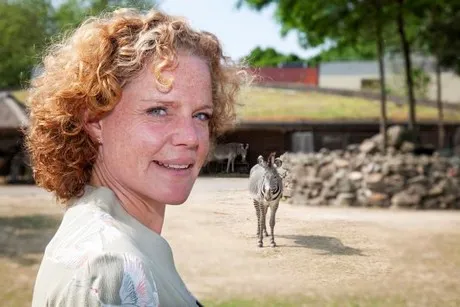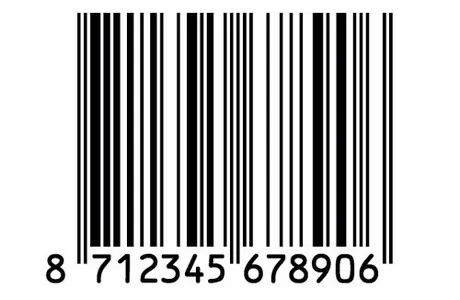This week, the bar code celebrated its 45th birthday. On 26 June 1974, the first product ever – a pack of Wrigley chewing gum – had its bar code scanned. Bar codes are a way of uniquely identifying products. GS1 Netherlands adopted a Grévy’s zebra in Artis Zoo in Amsterdam as a nod to the bar code, because each zebra has its own unique stripe pattern as well.
The bar code is a succession of vertical lines of various widths. A computer with a scanner can translate these lines into numbers: the product code. A bar code is, therefore, a translation of numbers into stripes. These numbers make a product uniquely identifiable. Bar codes can be found on every packet of biscuits, but also on medicine, drilling machines and make-up products.

Adoption of a Grévy’s zebra in Artis
In honour of the bar code’s birthday and to honour the black-and-white appearance of bar codes, GS1 Netherlands adopted a Grévy’s zebra in Artis. Each individual zebra has a different stripe pattern, and is therefore unique. A zebra foal can recognise its mother among thousands of other zebras by that pattern once the foal is a bit older. Of all zebras, the Grévy’s zebra is the most endangered. Artis participates in the European breeding programme of this species.
Marieke van der Spruit, communication manager GS1 Netherlands: “That GS1 Netherlands has chosen a zebra is due to the remarkable similarity with the bar code. Each individual zebra has a different stripe pattern, making it unique. For the first few days, a zebra foal recognises its mother by her smell and sounds, and later it’ll recognise its mother by her unique stripe pattern. Just like we can distinguish between two products at the check-out in the online shop by its bar code. This concerns hundreds of millions of products. The GS1 bar code is simply the passport for products.”

Uniquely identifying products
The bar code is the way of identifying articles. That isn’t just essential in physical shops, but online shops like bol.com, Wehkamp and Amazon also want the GS1 product numbers for a correct and unique identification of products. The GS1 bar code is the only bar code of value. That’s because it’s unique and can be used by everyone all over the world.
Bar codes, RFID and QR codes: all the same?
Marieke van der Spruit: “We’re proud the GS1 bar code has stood the test of time, because the most important thing of bar codes is their unique number.” These numbers can be translated into the well-known stripy code, but it could just as well be an RFID chip (Radio Frequency IDentification) or a QR code. All three of these are data carriers that can provide information about the product.
Using bar codes in company processes
With the bar code, retailers were given additional uses. Consumers received more specified receipts and shop chains can use sales data for purchases, sales or gear assortments to actual purchasing patterns.
Bar codes are also essential in the logistical process. Retailers can use the bar code to see something has ‘run out’: stock management. And think of the additional information coupled to the bar code. Consumers can use the Dutch food app ‘Kies Ik Gezond’ (Am I Choosing Healthy) of the Food Centre to see a list of all the ingredients of a product.
In hospitals, scanning medication with unique bar codes ensures a decrease in the number of medication errors. A 50-per cent reduction in the number of mistakes regarding the application of medicines is possible thanks to scanning bar codes of medication and a patient’s wrist band. This way, implants (artificial hips, for instance) can also be found more easily and more quickly in case of a recall.
For more information:
GS1 Nederland
Amsterdamseweg 206
1182 HL Amstelveen, the Netherlands
+31 (0)20 511 38 20
Jolanda.vanHeukelom@gs1.nl
www.gs1.nl
